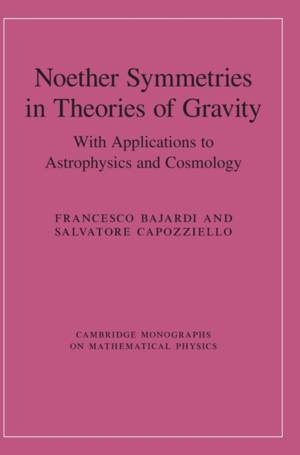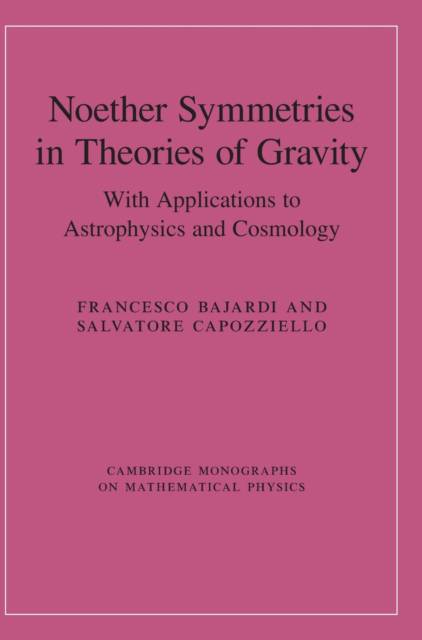
Door een staking bij bpost kan je online bestelling op dit moment iets langer onderweg zijn dan voorzien. Dringend iets nodig? Onze winkels ontvangen jou met open armen!
- Afhalen na 1 uur in een winkel met voorraad
- Gratis thuislevering in België vanaf € 30
- Ruim aanbod met 7 miljoen producten
Door een staking bij bpost kan je online bestelling op dit moment iets langer onderweg zijn dan voorzien. Dringend iets nodig? Onze winkels ontvangen jou met open armen!
- Afhalen na 1 uur in een winkel met voorraad
- Gratis thuislevering in België vanaf € 30
- Ruim aanbod met 7 miljoen producten
Zoeken
Noether Symmetries in Theories of Gravity
With Applications to Astrophysics and Cosmology
Francesco Bajardi, Salvatore Capozziello
€ 252,45
+ 504 punten
Omschrijving
This volume summarizes the many alternatives and extensions to Einstein's General Theory of Relativity, and shows how symmetry principles can be applied to identify physically viable models. The first part of the book establishes the foundations of classical field theory, providing an introduction to symmetry groups and the Noether theorems. A quick overview of general relativity is provided, including discussion of its successes and shortcomings, then several theories of gravity are presented and their main features are summarized. In the second part, the 'Noether Symmetry Approach' is applied to theories of gravity to identify those which contain symmetries. In the third part of the book these selected models are tested through comparison with the latest experiments and observations. This constrains the free parameters in the selected models to fit the current data, demonstrating a useful approach that will allow researchers to construct and constrain modified gravity models for further applications.
Specificaties
Betrokkenen
- Auteur(s):
- Uitgeverij:
Inhoud
- Aantal bladzijden:
- 475
- Taal:
- Engels
- Reeks:
Eigenschappen
- Productcode (EAN):
- 9781009208741
- Verschijningsdatum:
- 24/11/2022
- Uitvoering:
- Hardcover
- Formaat:
- Genaaid
- Afmetingen:
- 170 mm x 244 mm
- Gewicht:
- 916 g

Alleen bij Standaard Boekhandel
+ 504 punten op je klantenkaart van Standaard Boekhandel
Beoordelingen
We publiceren alleen reviews die voldoen aan de voorwaarden voor reviews. Bekijk onze voorwaarden voor reviews.











